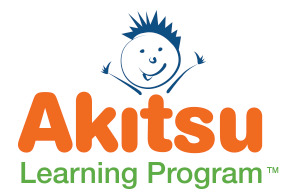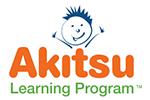Educational Methodology
3 Dimensional Learning | Multicultural Enrichment
Differentiated Collaborative Group Instruction
Akitsu Learning Program Educational Methodology
Each Unit meets the Standards while drawing from successful educational models to develop students understanding of the essential elements of learning as follows:
Project-based Learning
Project-based Learning presents a realistic situation or problem that appeals to students on an emotional level and empowers them to find a solution. In this way, students apply critical thinking, draw inferences, apply science, math and reading skills to evaluate, organize, invent and solve the given task. Through the process of completing the project, students gain an understanding of how to synthesize information, collaborate on several levels and structure an issue or a problem of a larger magnitude into logical, manageable tasks that can be shared and solved. Often this involves multi-generational interaction and mentoring from diverse sources by experts in their fields.
Blended Learning
Blended Learning combines classroom-style academic training and repetition practice for mastery with technology such as online learning, along with project-based activities. Other learning sources may include behavioral focus or health education to provide comprehensive opportunities for helping students identify their abilities, individual learning styles and preferences. These opportunities serve to develop a self-practice that supports inclusion, independent learning and self-efficacy.
Montessori and Founder, Maria Montessori
Maria Montessori believed that Educators must provide guidance but never become an obstacle to a child’s exploration and development. Independence, Inspiration and Hands-On Learning in creative, non-judgmental spaces are healthy environments for students to thrive and become life-long learners.
Waldorf and Founder, Rudolf Steiner
Rudolf Steiner believed that science and art were essential areas from which to experience education. The use of natural materials encouraged student exploration in the natural world and supported each child’s need for inclusion, independence and invention. In fact, Waldorf education prefers nature to stand in as tools for learning instead of relying on technology, especially for the kinder and early elementary students. He felt that a connection to the natural world allowed children to discover their innate sense of rhythm, wonder and wander. This creates a solid foundation for them to identify their interests, trust their intuition and recognize their inner strength. Through keen observation, the parent or teacher weaves these naturally developed abilities with essential curriculum to nurture each individual on toward emotional, social and educational success.
Current Courses
This engaging online course is designed for anyone who wants to tap into their creativity and discover the joy of abstract art. Through a series of fun and informative lessons, you'll learn about the history and key concepts of abstract art, explore different materials and techniques like collage, mixed media, watercolors, and acrylics, and experiment with color, composition, and texture to create your own unique abstract masterpieces. Break Creative Blocks and Find Your Artistic Groove; Are you tired of staring at a blank canvas or a half-written page? This 8-week hybrid workshop rekindles your artistic spark, whether you're a seasoned pro or a curious beginner. We'll ditch the "inner critic" and dive into playful exercises that crack open your creative blocks. Forget rigid rules and "go-to" styles - it's time to explore! No artistic skill needed! Experience weekly zoom connections & self-paced exercises. Gentle Yoga provides a detailed and solid foundation for students who want to integrate a yoga practice into their lifestyle. No prior experience is necessary.Beyond the Brush: Exploring Abstract Art for All Ages
From Frozen to Flowing
Gentle Yoga Workshop
The Basics of a Mind/Body Yoga Practice will be introduced, explained, and gradually developed with your Instructor. Over the 5 week Course, expect to participate in one LIVE Class, each week, then initiate a Self-Practice with Guided Instructions in the accompanying Yoga Modules provided.




